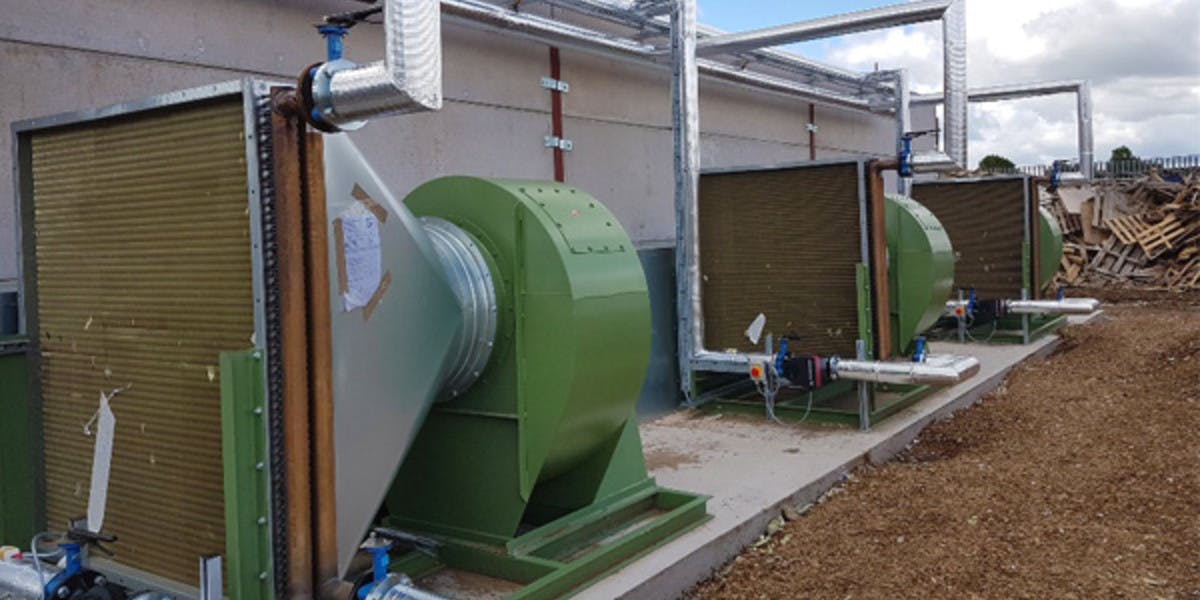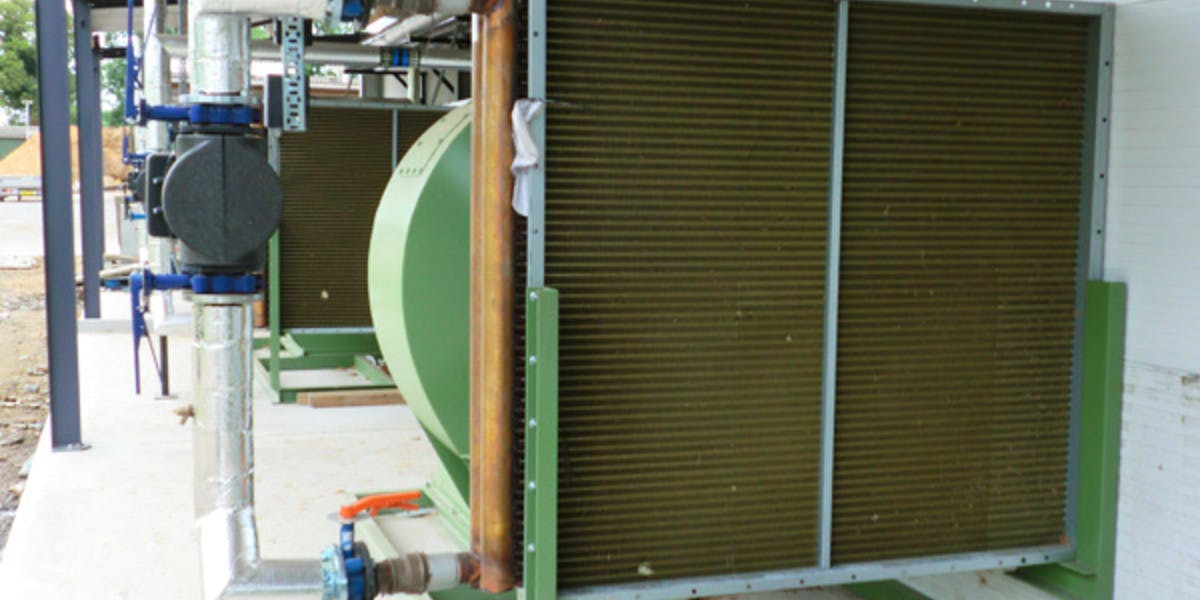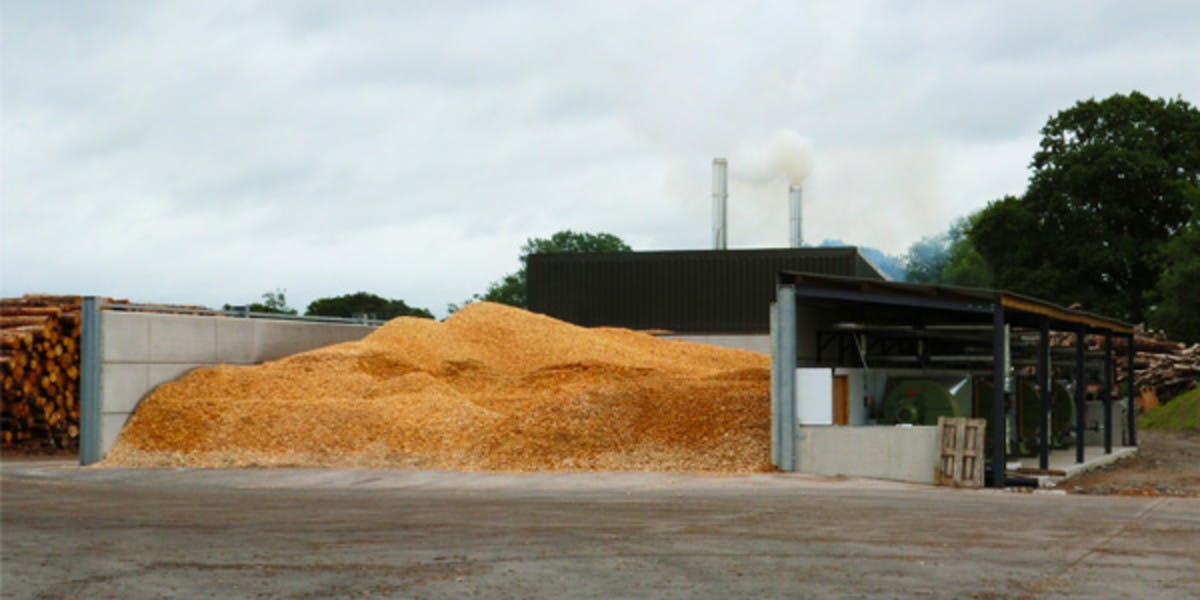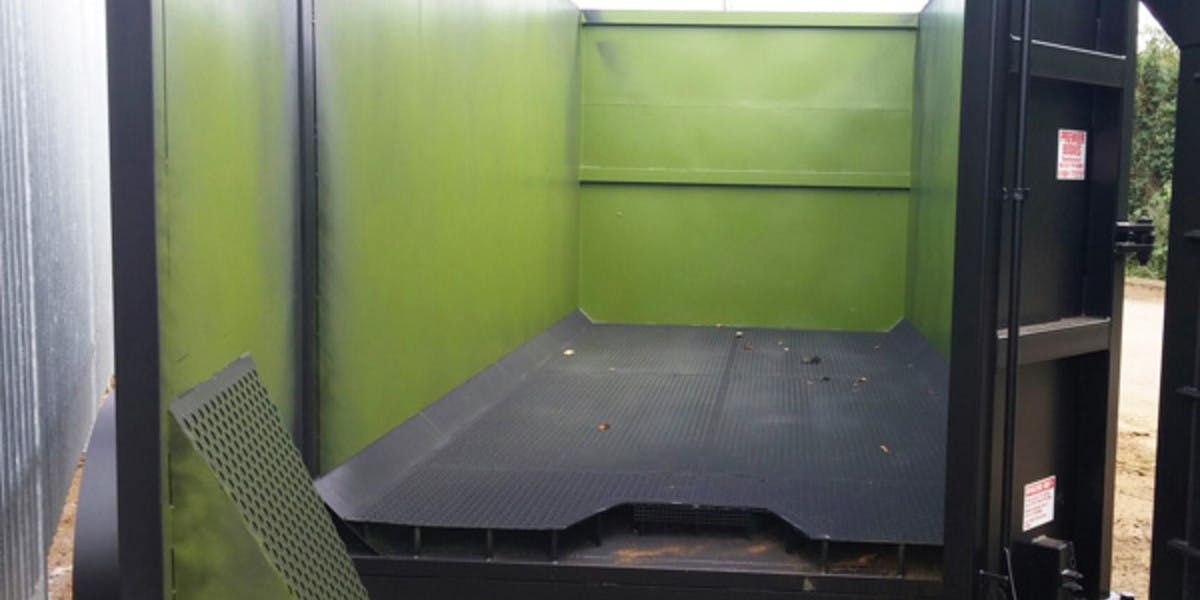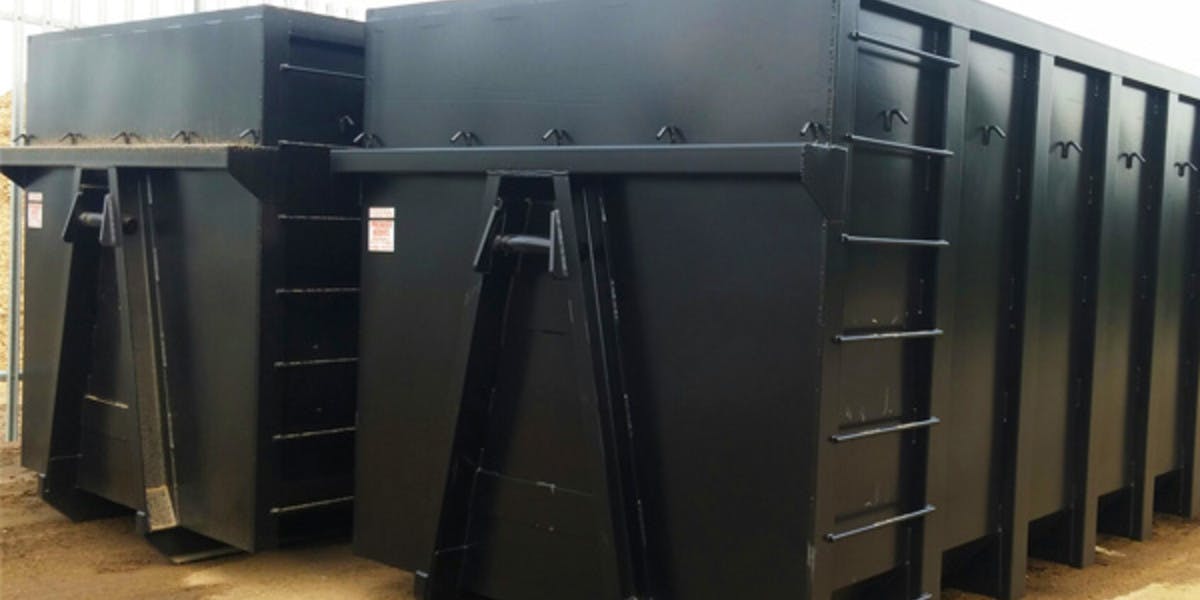What is a drying system?
There has been an increased interest in biomass boilers for farmers, recycling centres and woodland owners to dry their crops and wood. The drying times during the summer months is not an issue, however, when drying commercially through the year, it is paramount that the drying system is designed to dry a specified batch size within the required timescale. More importantly, this has to be done as cost effectively as possible.
Biomass is an ideal bolt on for drying systems, which is classified as process heat and is an approved use on the RHI scheme for drying crops, animal bedding and animal feed. Essentially the heat generated by the biomass boiler passes through a correctly sized water to air heat exchanger where a fan will then blow warm air through the floor to dry the material removing moisture at an accelerated rate. The size of the fan unit and volume of heat required is dependent on the amount of moisture that needs to be extracted and the number of hours it should take to remove this moisture.
There are generally many factors that have an influence on the result of the drying. These influencing factors include:
- Drying time
- Type of material to be dried
- Material state (e.g., coarsely/finely chopped material)
- Quantity of material to be dried
- Space available
This type of installation is what we typically see provide the greatest ROI and can be applicable at any scale; from a farmer with a 100kW system, all the way up to a recycling centre using a 5MW system fed with waste wood.
We have worked on numerous drying installations, from retro fitting a 100kW drying unit on to a an existing biomass system, through to large scale commercial drying operations using megawatt boilers.
Typically we find the initial capex on these projects is paid back within three to four years through RHI payments alone.
This is even without factoring in a value to the heat or any disposal savings that some sites have which will subsequently, shorten the payback period and increase the ROI.
Various drying system options
The technology is very similar from the boiler to the heat exchanger and fan regardless of size (setup pretty much the same, just upsized equipment). If looking to burn Grade C waste wood, then a special WID boiler is required which will have a lot of additional abatement technology to ensure emissions are kept below certain levels.
There are different drying systems available. The ones we typically use are:
- Drying floor – Either pre-cast concrete with perforated channels, or metal frame with perforated metal sheets. Concrete is about a 1/3 of the price but the metal is more heavy duty with a higher proportion of perforations for air to pass through so it ultimately achieves better drying.
- Hook bins – 40 or 50 yard hook bins converted to have a perforated floor. Hook bins acts in the same way as a drying floor, although it allows easier transportation of material between sites. Different types of material can also be dried in different bins at varying rates.
- Continuous flow – Material is continuously fed on to a conveyer belt at a shallow depth where it slowly passes though heated chambers that remove moisture.
Is a drying system suitable for me?
Are you considering a drying system but unsure if it will be suitable for you? To give you a rough idea, a drying system at the smaller scale is suitable for a farmer looking to self-supply, or someone who is looking to save money on fuel costs by looking to buy in green wood which they can then dry quickly for their own use.
In some cases people with existing systems are not using their full tier 1 allowance and this is an approved use under the RHI scheme coming under ‘process heat’.
Drying systems can easily be retro fitted with the capex covered in a couple of years through the additional RHI payments this will generate.
What are the benefits of a drying system?
If you have considered or are still considering installing a drying system, we’re certain you are already aware of the many benefits it has to offer. Some of these include:
- large RHI payments being generated depending on eligible heat use;
- increased value to the dried product;
- creating additional income streams;
- utilising any additional Tier 1 RHI capacity on existing installs;
- keeping fuel costs down as it allows you to buy in cheaper green wood to be dried on site without the need to season for anything up to two years which ultimately saves you both time and space; and
- the ability to dispose of waste wood this provides a method of lowering/removing disposal costs, whilst also giving them another business stream through drying certain materials.
How much does a drying system cost?
The cost of a drying system varies greatly in how it would be used. If you already know what your project will involve or even if you don’t, feel free to contact us so we can discuss your needs and give you a better idea of how much it’ll cost. To give you a rough idea, we’ve worked out four types of installations:
- As a retro fit to an existing 100kW biomass system, a 100kW heat exchanger and fan with a small drying floor could cost as little as £15k.
- A 250kW biomass boiler installation with 250kW drying system and floor would start from around £100k.
- A 1MW biomass boiler installation with 1MW drying system and floor would start from around £380k.
- A 1MW WID biomass boiler (to burn Grade C waste wood) installation with 1MW drying system and floor would start from around £750k.
Points to consider
We would like to draw your attention to some details we believe you should be aware of, prior to considering in investing in a drying system.
Due to the size of most of the varying drying systems, space is a highly essential point to consider before you invest in one. Typically you would need around 15m2 of drying space for every 100kW of heating.
Another main issues to consider is that there will be no fuel savings unless there is an existing drying business that uses fossil fuel. Same goes for carbon savings – unless you are currently using fossil fuel to dry, there will typically be no savings to be made here either.
A drying system will however generate disposable savings if burning waste wood. There is also potential disposable savings by removing moisture from waste products so there is less weight for disposal. In this instance, there can also be environmental benefits as it reduces the amount of waste going to landfill, therefore less vehicles loads which consequently also means a reduction in exhaust emissions.
Look through our other low carbon technologies
Biomass boilers

Biomass boilers produce heat by burning biological material from a renewable and sustainable source. Virgin wood is the most common type, but the appropriate biomass boiler can also use waste as a source of fuel.
Combined Heat & Power

Combined Heat & Power (CHP) can be used to generate electric and heat by burning biomass or fossil fuel. Sites that have a high and continuous heat and electric demand will benefit the most from this technology through fuel savings.
Drying systems
Biomass boilers can be utilised with a drying system to dry products such as crops and wood to increase their value, or alternatively to lower the weight of waste prior to disposal by evaporating water. This is classified as process heat, with some of these being an approved use on the RHI scheme.
District heating
District heating schemes allow multiple buildings to be supplied heat by a single boiler, thus enabling large savings in installation and operating. These schemes become progressively more cost effective with increased amounts of buildings that are connected.
Treco's RHI calculator

Try our RHI calculator to work out the fuel cost savings, potential RHI payments & payback you can expect from you biomass project. Developed in house by us, all you have to do is enter your boiler size, installed cost, current fossil fuel usage and your preferred biomass fuel type.
Buying, selling & moving existing biomass boilers
Due to recent changes in the government RHI rates, an older boiler can give you a more lucrative pay back tariff.
